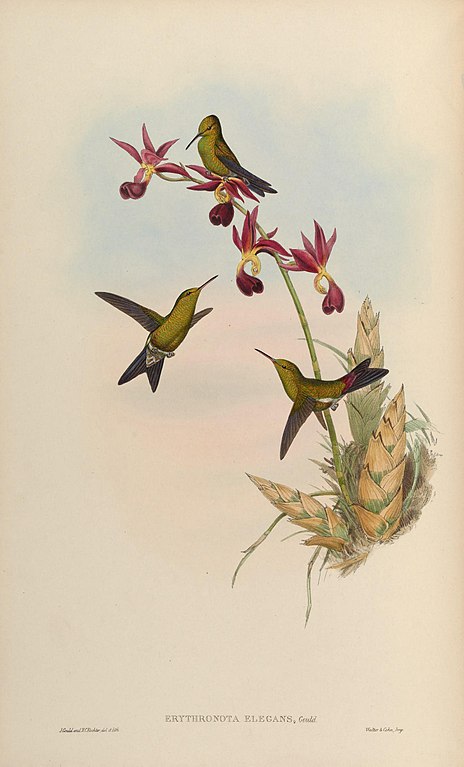Birdfinding.info ⇒ Known only from a single specimen believed to have been collected in 1860 in the Bahamas or possibly on Jamaica. Speculation about its origin is based in part on the current distribution of other Chlorostilbon emeralds, especially the fact that none occurs on Jamaica. However, Jamaica has four extant species of hummingbird, more than any other Caribbean island except Puerto Rico. Another theory is that it may have inhabited one or more of the northern Bahamas and was displaced by expansion of the Cuban Emerald to those islands, then went extinct around 1860.
Gould’s Emerald †
Chlorostilbon elegans
Extinct. Former range unknown, but believed to be either the Bahamas or Jamaica.
Identification
Male was a medium sized hummingbird with a forked black tail, golden upperparts, coppery rump, yellowish-green underparts, and white vent. Female plumage was never documented but likely resembled other female emeralds.
Notes
Monotypic species.
References
Fogden, M., M. Taylor, and S.L. Williamson. 2014. Hummingbirds: A Life-size Guide to Every Species. HarperCollins, New York.
Hume, J.P. 2017. Extinct Birds (Second Edition). Bloomsbury Publishing PLC, London.
